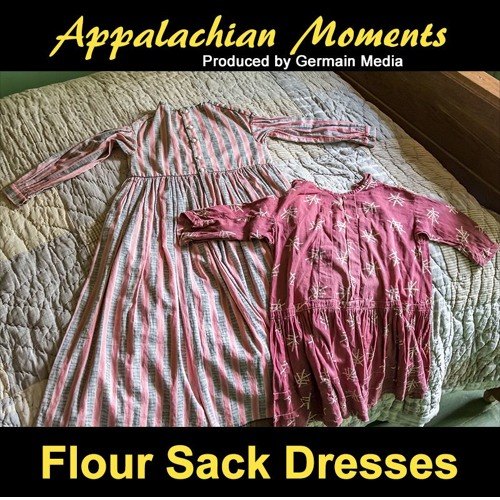Coming fresh off of the Great Depression and as World War II forced rationing of a broad array of consumer products, it was estimated that over 3 million women and children were wearing clothes hand made from feed or flour sacks.
Today we call it recycling or more to the point, repurposing. It involved the mindset of making the best use of whatever you had on hand.
Without social media, Pinterest or the Internet, it took the flour mills a fair amount of time to finally recognize the innovative use of their packaging. The first thing the mills did in response was to start using specially printed fabric, believing that it could boost sales…correctly, we might add.
By the late 1930’s, the mills were actually hiring artists to create the designs as a fierce competition had grown in the marketplace to produce the most desirable prints.
And it wasn’t just about clothes, women took creativity and thriftiness to new heights transforming the sacks into dresses, undergarments, towels, curtains, quilts and other household necessities. As awareness grew, national sewing contests were organized as a way for women to show off their skills AND for manufacturers to display their designs.
Those who had more feed or flour sacks than they could use were able to sell them back to the store where they were then sold again for a quarter each according to Ann Wyrick Burge, whose father operated such a store in West Jefferson, North Carolina.
Freeda Holladay remembers that the highlight of going to buy feed was choosing the printed sacks when it was her turn for new clothes. Two sacks for a shirt, three for a dress.
Jo Ann Andrews commented that her grandmother today would be called a hoarder. She kept holding things back for (quote) later (unquote). When her grandmother passed away, she still had items with the tags on them…Jo Ann said the family all wondered when “later” was going to be!
Nita Matherly-Baker remembers her “Memmie” making aprons, dish cloths and quilts…and how she admired the pretty cotton sacks at the feed store.
Patricia Jenkins recalls that her grandmother adding tatted lace to the sack dresses to make them more even more beautiful.
Some manufacturers even offered directions for using the strings from the sacks to be used in knitting or crocheting…the lesson learned was to never waste anything.
When perma-press clothes became popular in the late 50’s some thought it was a gift from heaven…no more ironing bushel baskets of clothes!
And while some folks remember dreaming of actual “store-bought” clothes, those cotton sack dresses were ultimately worth so much more…in precious memories and treasured family stories.
If you’d like to hear the audio version of this post, please click below and please share your memories of flour sack dresses with us and thanks again for liking, commenting and sharing this post!

